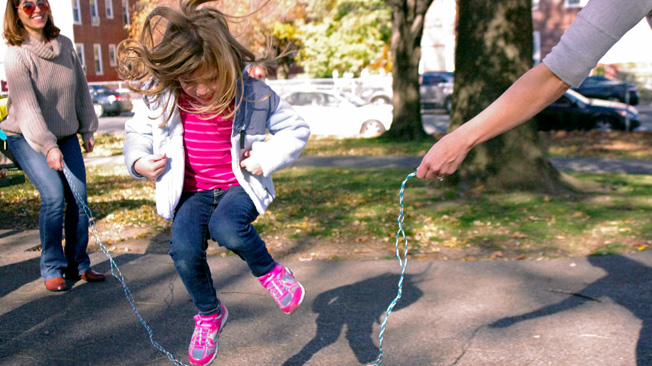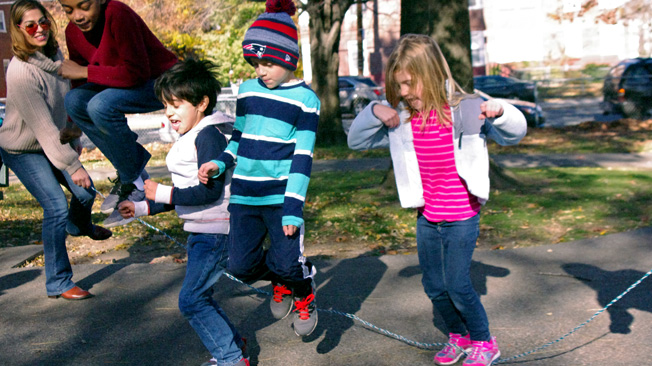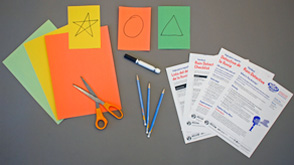Rain Detective

What Is This Activity?
Is rain on the way? Can families tell before the storm clouds roll in? They will look up to the sky for clues that the weather is about to change.
Introduction

Learning Goals
Big Science Idea:
- Before a rainstorm, the amount of moisture in the air and the air pressure change. Those changes affect animals, plants, and the sky.
Skills kids will use to investigate it:
Observe small details
Gather, track, and compare observations and data over time (outdoor odors, temperature, wind speed and direction, sky conditions, air pressure, bird behavior)
Interpret data and draw conclusions
How Do You Get Ready?
Read the activity and gather the materials.
Scout out an open outdoor place with a clear view of the sky, the higher the better.
Troubleshoot any safety concerns (traffic, poison ivy, sharp objects, etc.).
Prepare Sherlock’s race course (the warm-up game): Cut the construction paper into quarters, for a total of 12 pieces. On each piece draw a different shape: star, circle, or triangle. Shuffle the pieces into random order and place them on the ground to form a long, spread-out trail. Make a list of the 12 color-shapes in the order placed on the ground for an answer key. Copy or print one key per adult. Identify a start line a little distance from the course.
Print out one copy per family of the “Rain Detective” and “Rain Detective Checklist” handouts.
If you don’t plan to show the “Where Does All the Snow Go?” video that is paired with this activity on the website, watch it ahead of time and jot down concepts to share with families during the activity.
Warm-up 10 minutes
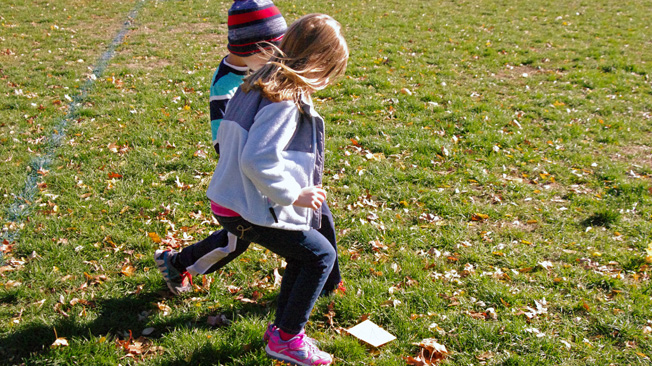
(Science Skills: Observe small details)
Sherlock’s Race. This game isn’t about forecasting rain, specifically. It’s about practicing the science skill of observing and tracking small details—which is important to practice before using weather observations to make forecasts. It’s also a fun challenge that data-oriented kids will excel at.
Adults stand at the finish line with the answer key. (See: “How Do You Get Ready?”) Kids gather at the start. Their goal is to memorize the 12 colors and shapes in order. If your group skews young, consider using six to eight colors and shapes.
On your signal, kids begin running, stopping at each paper long enough to memorize the color and shape. No backtracking!
At the finish line, each player tries to recite the list to an adult (e.g., red star, yellow triangle, blue circle, etc.). If incorrect, the player runs back to start and races again.
Players who get all 12 items correct win the game! Stop the game when time is up.
Discuss: Explain that scientists are like police detectives. They notice, remember, and keep track of small details. Ask: What do you notice about the weather today? Can you name five things that are different from yesterday?
Activity 20-40 minutes
Rain Detective
(20-40 minutes)
(Science Skills: Observe multiple details; gather, track, and compare observations and data over time)
Ask for a show of hands: Who thinks it will rain later today? How can you tell? How about tomorrow or the next day?
Take a deep breath together. Ask: What do you smell? Are the odors strong or weak? Explain that right before rain, odors are stronger. Encourage families to learn the “rain smell” by taking a deep breath outside each day and noticing differences. They can also observe: How does the air smell after rain?
Climb or walk together to your sky viewing area. Ask: How’s the air up here? Fresher? Cooler? Windier? Explain that what’s in the air, the temperature, and the wind speed and direction all change as you go higher. That’s true from the ground all the way to the edge of space!
Pass out the “Rain Detective Checklist” handout and review the directions with families.
Tell families that air pressure is a tough concept for most people to understand, but it’s key to measuring changing weather. Explain that air has weight, even though you can’t see it. Air pressure is a measure of the weight of air that is pressing down on Earth—how many pounds per square inch, for example.
Ask: Has anyone ever felt their ears pop or hurt while flying in an airplane or driving up a mountain? That’s caused by a change in air pressure, which decreases with altitude, or how high you are. Tell families they will look for signs of rising or falling air pressure.
Ask a volunteer to read aloud the first row of the “Rain Detective Checklist,” about jet contrails (long white clouds of ice crystals that a jet makes very high in the sky).
- If you see a contrail, point it out and ask kids to describe it. How many contrails can you find? Do contrails all look the same? (Some contrails stay thin; others spread and puff up, a sign of very moist air.) Will it rain in three days? Wait and see! Tell families to record today’s date on the chart and, later, the date of the next rain.
- If high-flying jets don’t make contrails or their contrails disappear quickly, discuss why. (The atmosphere is very dry. Ice crystals change back into water vapor quickly.)
- Encourage families to keeping looking for contrails on clear days and track the dates on the chart.
Look for flying birds, the next row on the chart. Ask: Are the birds flying low or high? Look for flocks of birds, like swallows or starlings, which are easier to spot than solo birds.
Tell families that birds are sensitive to changes in air pressure. Migrating birds and hawks, falcons, and other birds of prey normally fly very high, so it’s easy to notice one when it is flying low.
Encourage families to take home the handout and look for the last two “Rain Clues” on their own, at sunrise and on an evening when they can see the moon.
Time permitting, try this fun and active way to memorize the weather rhymes from the “Rain Detective Checklist” by playing jump rope. Ask pairs of adult volunteers to twirl the jump ropes while everyone (kids and adults) take turns jumping in while saying a rhyme. Then, encourage kids to make up their own weather rhymes on any topic. Then, allow for kids to enjoy a few minutes of energetic jump-rope free play, if they like.
Wrap-up 10 minutes
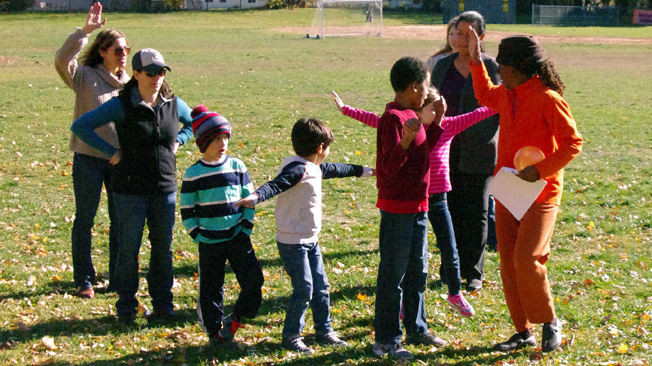
(Science Skills: Interpret data to conclude whether observed changes [due to varying levels of air pressure and moisture] precede a rainstorm)
Ask kids what they think of these rain clues. Are they true? How could you know for sure? (Keep track of clues and rainstorms over time and then count how often rain follows the clues.)
Review the Rain Clues together to see what weather words come up over and over. (Wet, dry, air pressure, etc.) Explain that rain is likely when the atmosphere is wet—when it contains a lot of water vapor, droplets, or ice crystals. Rain is also more likely when the air pressure changes from high to low—meaning the air gets lighter.
Encourage families to take home the “Rain Detective Checklist” to track the rain clues over a series of days; also point out the “Explore Some More” activities. If you wish, give them the “Explore Weather Around You” handout to provide them with more ideas on how to continue investigating weather together.
Explore Some More
When Rainbows Mean Rain
Rainbows are like sunsets and sunrises when it comes to forecasting rain—and for the same reason. If you see one in the east in the morning, there’s moisture coming your way. If you see one in the west in the evening, the moisture has passed you by, and tomorrow will likely be fair. Have families make up a rhyme to remember this “Rain Clue.”


